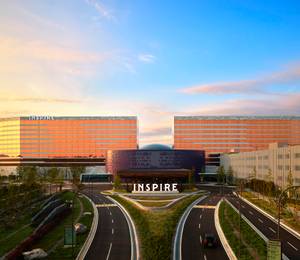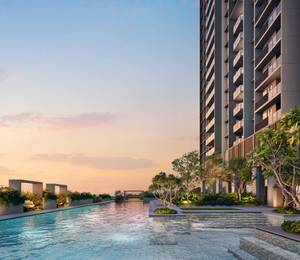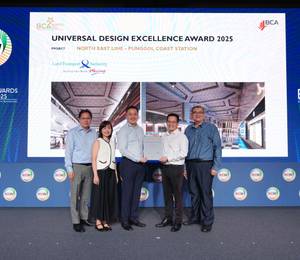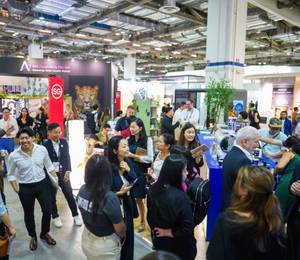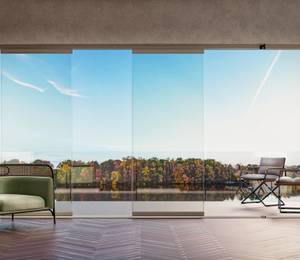On 9 July 2025, the Singapore Green Building Council (SGBC) unveiled two new resources as part of the Go 25 movement to accelerate sustainable cooling, as new research reveals a seismic shift in how businesses value green buildings.
Launched at the Singapore-International Green Building Conference 2025 (IGBC-SG 2025) by the Minister for Sustainability and the Environment, Ms Grace Fu, the resources come alongside new data showing sustainability is now a strategic priority for Singapore’s built environment sector.
The new resources—the Go 25 Indoor Comfort Snapshot and the Go 25 Industry Guide for Building Operators—provide practical, data-driven guidance to help Singapore’s built environment sector optimise energy use while maintaining occupant comfort.
Go 25 Indoor Comfort Snapshot
This first-of-its-kind publication synthesises data from the Go 25 Indoor Comfort Quiz launched earlier in the year. It offers business owners, building managers, and workplace teams actionable insights on temperature settings. The Snapshot reveals key trends in occupant preferences and demonstrates how commercial spaces can transition to 25°C without compromising comfort.
Based on analysis of quiz data from more than 5000 respondents, over 50% of respondents expressed a preference for maintaining indoor temperatures at 24°C or warmer, indicating a significant shift toward greater acceptance of higher temperature settings in built environments. The Snapshot also provides insights on established research on optimal comfort ranges as well as strategies to Go 25 in the workplace.
Go 25 Industry Guide for Building Operations
Complementing the Go 25 Indoor Comfort Snapshot, the Go 25 Industry Guide for Building Operations is developed specifically for facilities managers and building operators to deliver practical implementation strategies, including:
- Technical recommendations for system optimisation
- Real-world case studies of successful transitions
- Step-by-step checklists for gradual temperature adjustment
Aligned with national sustainability goals and green building standards, the Industry Guide aims to help optimise cooling systems and facility operations—supporting building managers, engineers, and operators to more efficiently Go 25.
The Go 25 movement aligns with Singapore’s sustainability ambitions and green buildings framework. By moving toward 25°C in air-conditioned spaces, businesses can reduce cooling energy use by 12% for every 1°C increase, while maintaining thermal comfort through complementary measures like improved air movement and adaptive clothing policies.
Both resources can be accessed at https://greenbuildings.sg/go25/.
Mr. Allen Ang, President of the SGBC, stated, “Buildings contribute over 20% of Singapore’s carbon footprint, with air-conditioning driving a significant share of energy demand. Rethinking the way we cool our spaces isn’t just a good-to-have; it’s essential for meeting our climate goals.
“The launch of the new Go 25 resources brings clarity to action. By translating intention into practical guidance, we remove the guesswork and enable developers, facility managers, and tenants to confidently embrace 25°C. This is more than temperature—it’s about closing the gap between ambition and execution. With these tools, we are empowering every stakeholder in the built environment to take meaningful, measurable steps toward a low-carbon future.”
Pushing Green Building Adoption Amidst a Challenging Business Environment
The newly released ‘Awareness to Action: Insights for a Greener Built Environment’ report, jointly developed with SGBC Founding Member Schneider Electric, tracks a notable shift in corporate attitudes since its 2023 edition.
Although 74% of businesses plan to increase their use of green buildings in the next 1–2 years, up from 52% in 2023, implementation challenges are increasingly complex. Participants surveyed mostly favour retrofitting over relocation or newbuild construction, with building owners citing a desire to extend the life of existing structures and tenants hoping to avoid incurring relocation costs.
The skew towards retrofitting was more marked among tenants, who would face challenges moving out of their current premises into greener buildings. Landlords showed a more even split between a retrofitting and a newbuild strategy, with some citing newbuilds as a better way to incorporate green building technologies.
In light of these findings, the report lists three recommendations to further accelerate the adoption of green buildings in Singapore:
- Retrofitting must become a priority
- Business leaders should broaden their perspectives when calculating the costs and returns from green building adoption
- A larger pool of green building professionals, such as SGBC’s Green Mark Professionals, is needed to support companies in their green transition
Advancing Green Building Leadership at IGBC-SG 2025
More than 700 professionals gathered at IGBC-SG 2025 to explore trends like building climate resilience, whole life decarbonisation, retrofitting, and tropical sustainability. The three-day event culminated in the SGBC Gala Dinner 2025 on 11 July 2025, in celebration of 20 years of the BCA Green Mark scheme.

